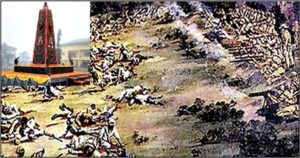GS1 – Medieval Indian History

Context:
The Patharughat Uprising of 1894 has recently been highlighted in the news for its historical significance.
Overview of the Patharughat Uprising
- Also Known As: The Patharughat Peasant Revolt, this event remains one of the lesser-known struggles in India’s freedom movement.
- Date & Location: Took place on January 28, 1894, in Darrang district, Assam.
- Cause: The revolt stemmed from widespread discontent among farmers against unjust British taxation policies.
- Impact of Taxation: Between 1826 and 1893, land revenue rates were repeatedly increased, severely impacting the agrarian economy.
- The British tax policy aimed not only to increase revenue but also to weaken the peasantry, forcing them to abandon traditional farming and join the labor force.
British Response & Aftermath
- Suppression of Protest: The British authorities responded with violence, as colonial police opened fire on the peaceful, unarmed protesters, resulting in the deaths of over 140 farmers.
- Comparison with Jallianwala Bagh: The massacre at Patharughat is often compared to the Jallianwala Bagh massacre (1919) due to the brutal killing of innocent civilians.
Commemoration & Legacy
- Krishak Swahid Diwas: Observed annually on January 28, this day honors the martyrs of the Patharughat revolt, with official tributes from both the government and local communities.
Cultural Significance – Doli-Puran
- Historical Ballad: The Doli-Puran, a renowned Assamese ballad, recounts the events of the Patharughat uprising.
- Authorship: Narottam Das, an eyewitness to the revolt, composed this work, using poetic narration to preserve the memory of the resistance.
- Symbolism: The term “Doli” in Assamese translates to “earth” or “soil”, signifying the farmers’ deep connection to their land.




